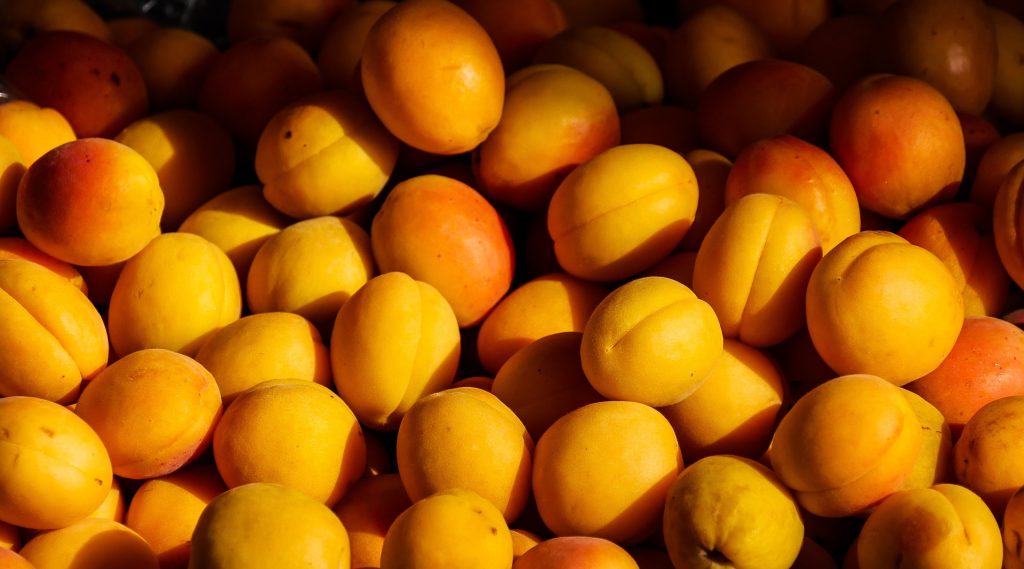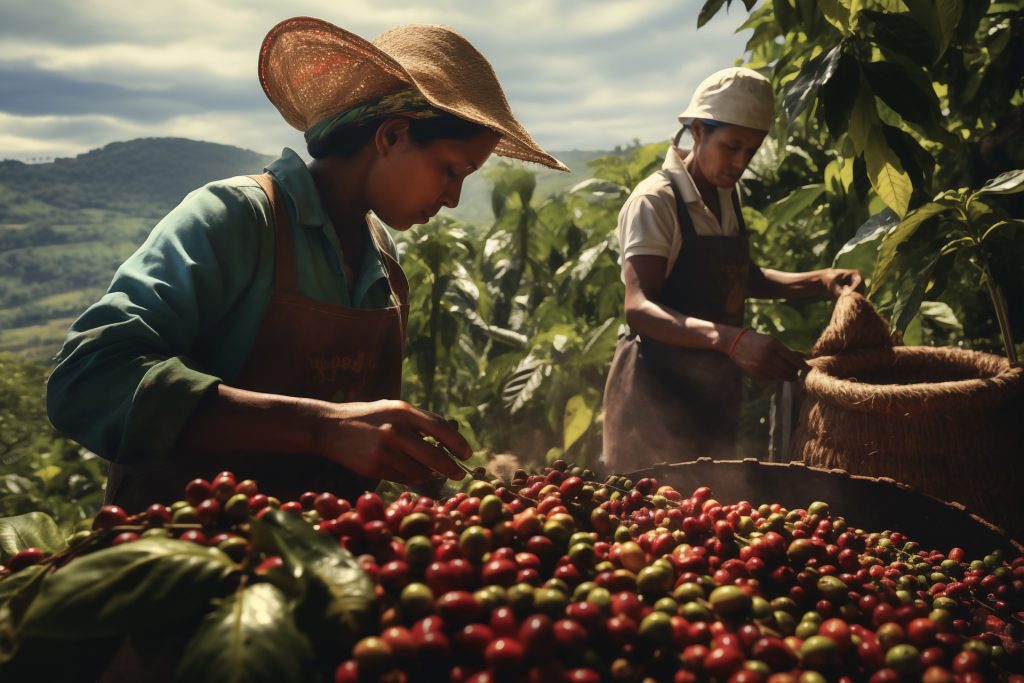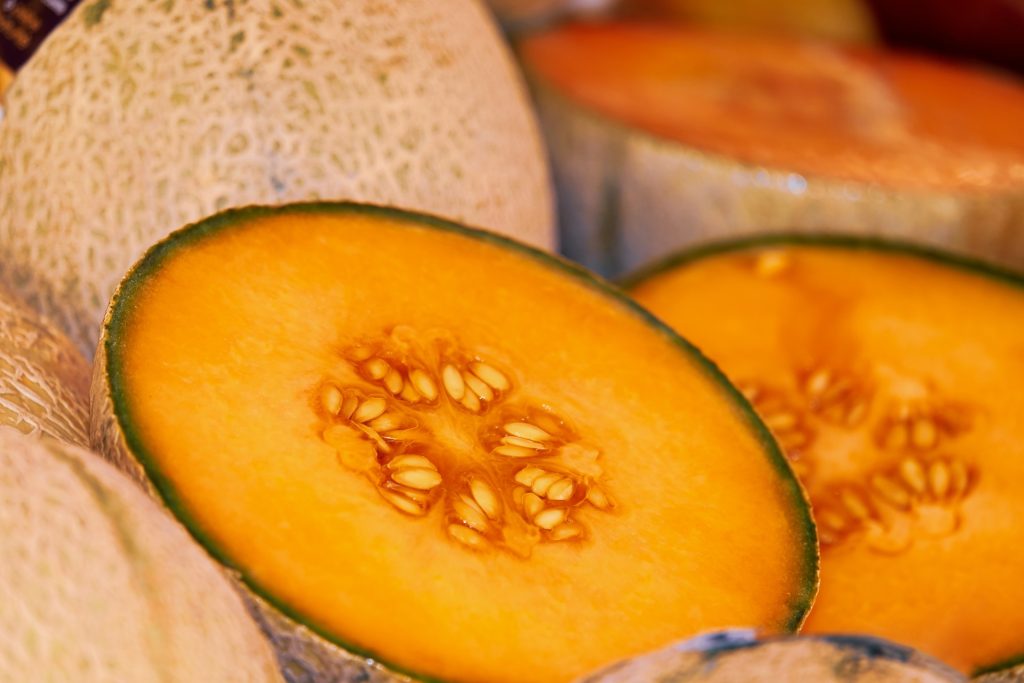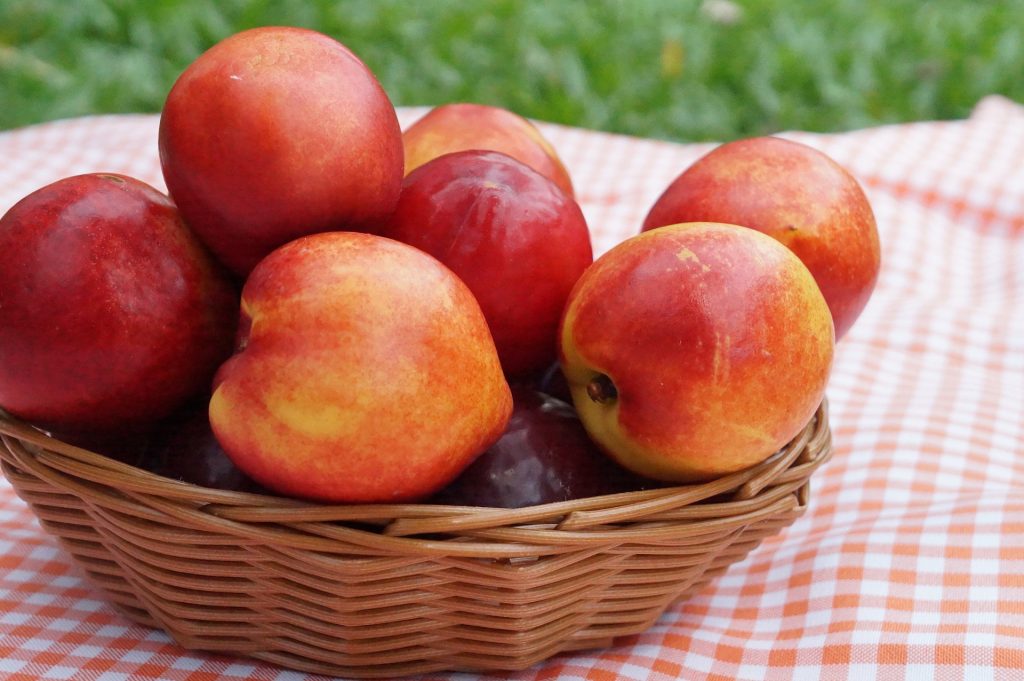Blog
Find articles that matter. From trading to shipping, trends to valuable goods, you can deep dive into everything you need.
Latest Posts
Blog
Local and international logistics are constantly evolving. Transportation modes are critical for the transport of goods between two places. If a product needs to be delivered to a country, there are several choices available, including sea, air, and land transportation. Land freight and sea freight are two of the most common transportation methods. What are the distinctions between road and sea freight? Read more to learn how to choose the best mode of transportation for your products.
What is Land Freight?
The term "land freight" refers to the transportation and delivery of commercial products by road to their destination. Land freight services rely on national and international rules, logistics and service expertise, alternate routes, and other factors. It is a paid mode of transportation that facilitates the transfer of goods from one location to another with proper vehicles. Land freight requires a contract between the carrier and the sender. In land freight, goods are delivered by train or truck.
One of the most fundamental concerns in land freight is that the carrier has all of the relevant documentation. There are numerous sorts of paperwork, including the Shipper's Receipt, CMR Document, and Truck Carnet. The documentation may differ depending on the requirement, the country, the mode of transportation, and the type of product.
What are the Advantages of Land Freight?
Land Freight is more common than other types of transportation. It is far more profitable to use the land route, especially for short-distance goods shipments. The goods' final destination can be determined as desired. This allows for simple door-to-door transfers. For land freight, the availability of roads and the investments made are essential. The rights of the sender are protected by insurance against the risk of product damage, wear, or loss while being transported.
In land freight, product loading and unloading is a fast process. In most regions of the world, the road network is continuous, and road transit is generally free of delays. Many different products with varying weights or quantities are transported by land around the world. Tracking items is also easier compared to other modes of transportation. Land freight is often more affordable than air transportation. However, it may be more costly than sea freight, particularly in developing countries with inefficient road infrastructure.
What is Sea Freight?
Sea freight is the process of transferring materials and goods in many sectors using marine and cargo ships. The transfer process between ports is carried out by sea routes in sea freight. The products are transported and delivered at the specified location and time. Only roughly 100 of the world's 4,600 ports are of international importance. Sea freight provides logistics and transportation services between these ports on a regular basis.
Many governments and companies prefer sea freight since it is the lowest-priced mode of transportation worldwide. Sea freight is also frequently utilized in the transportation of raw resources in different industries such as energy and food. Especially in the transport of raw materials and merchandise across vast distances, sea freight is employed in order to reduce expenses.
International sea freight refers to the process of transporting goods by sea between countries. Transport activities in international waters are comparatively cheap. This mode of transportation is preferred so that sensitive and dangerous goods can be carried without any incidents. Shipping operations must adhere to certain guidelines like land freight.
Raw goods, in particular, can be delivered to all regions of the world. Sea freight is commonly favored by countries with a seacoast. The procedure begins with the loading of cargo onto ships and concludes with their departure from the port in the destination country.
What are the Types of Sea Freight?
Within sea freight, there are two different types: liner and tramp transportation. The first is tramp transportation, usually known as irregular transit. Ships are used to transport products such as timber, oil, and mine in this sort of sea freight. The timeframes are not significant because the ship's departure date and the date of its approach to the port are determined in advance. The goods are delivered to their destinations as the ship approaches the port. The ships in this mode of transportation do not depart until they are completely full.
The second type of transportation is regular, also known as liner transportation. In liner transportation, the service is in the foreground. The ships' departure, arrival, and transfer ports are predetermined. It has no bearing on whether the ships are full or empty when it concerns the liner transit. The container transportation and Ro-Ro transportation types can be given as examples of liner transportation.
What are the Advantages of Sea Freight?
Sea freight is advantageous in numerous ways. The most significant of these benefits is that it is considerably cheaper than other modes of transportation. It is known that sea freight is 3.5 times less costly than railway freight and 7 times less costly than land freight. Another advantage is that it can convey massive loads at once. As a result, sea freight has a higher preference rate.
One of the most inherent benefits of sea freight is that it can reach any destination. The difficulty of crossing borders between countries does not occur on the seaway, which is the safest mode of international transportation. The sole disadvantage of this mode of transportation is that it is slower than air or land freight.
To conclude, both sea and land freight offer their own advantages. Land freight is known for being faster and sea freight is renowned for being safe. Each day, different kinds of goods are delivered to hundreds of various locations using these two methods. The manner of transport is determined by the type of cargo, the chosen destination, and other considerations. The best mode of transportation is based on particular circumstances.
Tariffs are one of the key tools used by nations to impose trade barriers as part of their geoeconomic policies. In other terms, tariffs are the customs duties that governments impose on merchandise imports. Other significant tools that impede the movement of goods and services include non-tariff barriers, which are in addition to tariff barriers. The fundamental driver of protectionism between nations is these tariff measures. In other words, nations utilize tariffs to shield native producers and consumers from overseas rivalry. Because the protection of producers and consumers protects both local production and prestige in the foreign market.
Knowing the appropriate product code is crucial when it comes to tariffs because customs charges are calculated using the GTIP code. Before choosing to enter a given country, exporters need to be aware of both tariffs and non-tariff restrictions. It is also a crucial factor to consider when performing target market research because it has a direct impact on how importers make purchases. Undoubtedly, businesses prefer to import goods from nations with minimal or no non-tariff and non-tariff trade restrictions. For goods that cannot be replaced, the importer must endure stringent import conditions, even when it makes more sense from a material standpoint. So, knowing everything there is to know about tariffs and non-tariffs puts you one step ahead.
What is a Tariff Barrier?
Many countries are experts in production and their acquisition is limited by their natural resources and their ability to produce certain goods and services. To meet the needs and desires of their citizens, they decide to trade with other nations. However, trading partners don't always reasonably conduct their business.
Every nation has its geographical advantages and drawbacks in terms of policies. Competition between nations and a host of other causes can also cause issues between trading partners. Tariffs are relevant in this situation. Governments deal with trading partners they don't agree with by imposing tariffs. A tariff is a form of tax that a nation imposes on imports of goods and services to preserve competition.
But it is not entirely correct to think of tariffs only as a form of taxation. Tariff barriers are chains of policies implemented by governments to protect themselves. Tariff barriers also called border taxes, provide revenue to the government in the form of taxes and fees. In addition, imposing tariffs makes the price of imported products affordable to maintain the country's independence from imports. Also, nations that do not comply with the government's foreign policy are penalized using this type of trade barrier policy.
A government has the right to impose tariff restrictions in several different ways. Tariffs are named according to their purpose. Some of the most common tariff barriers include:
- Ad-Valorem Tariffs
- Particular Tariffs
- Specific Tariffs
- Complex Tasks
- Protective Tariffs
- Licenses
- Duties for Voluntary Exports
- Transit Tasks
What is a Non-Tariff Barrier?
By definition, non-tariff trade barriers impose restrictions on the import or export of goods and services in methods other than the imposition of tariffs. Non-tariff barriers are restrictive laws that, in the absence of taxes, make it difficult or expensive to import or export a specific good or service.
Trade restrictions known as non-tariff barriers do not involve paying taxes or duties. In other words, aside from the actions performed in the tariff policy, these barriers are obstacles to trade in the import of foreign goods. Non-tariff barriers are a type of "non-tax" policy, to put it succinctly and simply.
A non-tariff barrier policy may occasionally have a similar impact as a tariff barrier. The application of restrictions in this instance, however, is limited to prohibitions, conditions, and procedures, which complicate and limits the entry of foreign goods. Non-tariff barriers, however, are not used in conjunction with tariff obstacles.
We can list some of the non-tariff barriers as follows:
- Embargoes,
- Voluntary Export Restrictions,
- Quotas,
- Technical Trade Barriers,
- Licensing,
- Responsibilities against Dumping,
- Anti-Competitive Duties,
- Safeguards,
- Public Procurement,
- Formalities and Procedures.
The Difference Between Tariff and Non-Tariff Barriers
Even while each tariff and a non-tariff barrier is distinct in its own way, they are nonetheless significant government-imposed regulations that every trading organization should be aware of. Companies need a thorough knowledge of these topics since they will come across regulations unrelated to their economic circumstances. Commerce restrictions are a helpful tool for shielding home producers from competition on international markets, but they impede trade in products and services on the world market. Let's examine the distinctions between tariff and non-tariff barriers:
Barrier Intent
The tariff barrier benefits the nation in two ways. The first benefit is that it shields home producers from the damaging consequences of international competition. Second, it offers the state an extra source of revenue. On the other hand, a non-tariff barrier safeguards native manufacturing firms while assuring that foreign competitors can access the country's market only after fulfilling specific requirements or formalities.
Implementation Method
Taxes and levies are used to impose tariff barriers. Conditions, voluntary export duties, various formalities, and other non-tariff obstacles make up the limitations.
Nature
While tariff barriers are explicit, non-tariff barriers are implicit.
Government Revenue Generation
Due to taxes and duties in a tariff barrier, the government has the power to produce income. On the other side, the government has no opportunity to collect money when there is a non-tariff barrier.
Impact of Imposing Trade Barriers
The price of imported goods is significantly impacted by tariff barriers due to the imposition of taxes and charges. In other words, the cost of these things tends to skyrocket. Non-tariff barriers have an impact on both the quantity and price of imported commodities.
Groups that are Monopolistic Forming
While non-tariff restraints give monopolistic groups the chance to make significant profits, the application of import tariffs and levies in the context of tariff barriers diminishes the likelihood of monopolistic emerging organizations.
Possibility of Making Money
The chances of importers profiting greatly are frequently reduced by tariff barriers. With non-tariff barriers, importers can simply generate and collect good profits.
Direct or indirect effects of restrictions
While tariff barriers do not allow and indirectly restrict the import of goods, non-tariff barriers directly restrict the import of goods.
The Simpleness of Tariff Implementation
Implementation of the tariff barrier is easy. This is so that there is no need to assign formalities, licenses, or quotas separately since legislators have already set these constraints in the form of flat rates. There are authorities with various responsibilities for implementing a non-tariff barrier. Such delegated responsibilities are difficult to implement because they can result in political corruption and meddling.
Time of Impact
Any modification to the tariff barrier policy immediately and significantly impacts the amount of merchandise imported from other nations. On the other hand, it takes time for the non-tariff barrier policy changes to be implemented and go into effect.
Apple is an edible fruit variety belonging to a tree called Malus Domestica. Apple trees grow in many palaces of the world. Besides, Malus is the most cultivated species. There are more than 7000 varieties of apples. However, many of these varieties are human-made. It is formed as a result of mixing different apple species in the laboratory environment. In addition, apples are a fruit rich in vitamins and minerals. This fruit, which has high nutritional value, also has many health benefits.
Nowadays, apples are one of the most consumed fruit varieties. According to current data, the estimated apple production worldwide in 2022 is 81,799 million tons. The leading countries that produce and export apples are Turkey, China, Italy, the USA, New Zealand, and Chile. In this article, detailed information is given about the leading countries in apple exports.
Suitable Climatic Conditions for Growing Apples
There are general climatic conditions for the apple to grow in the best conditions. Apple grows especially in temperate and cold temperate climates. The apple tree is resistant to low temperatures. However, it is not suitable for growing in high summer temperatures. At high temperatures, the development of apples slows down or stops. The average summer temperature during the growth period of the apple should be 21-24 degrees Celsius. The apple tree grows at an altitude of 1500-2700 meters above sea level.
Usage Areas and Benefits of Apple
There are more than 7000 known varieties of apples. The taste of these apple varieties also varies. They usually have a sweet and sour flavor. Apples are the most consumed fruit variety in the world with excellent taste. The use of apples is very wide. This fruit is a perfect snack. Additionally, it is used to make vinegar and wine. Different varieties of apples are generally used in desserts, salads, and meals.
One of the reasons why apples are consumed so much is because they are healthy. This fruit is rich in vitamins and minerals. Apples contain vitamins A, E, C, and B. Also, they are rich in manganese and copper minerals. This fruit is good for heart, brain, and stomach health. Apple is a fruit high in water and fiber. Therefore, it also supports the weight loss process.
Top Apple Exporters in the World
The total production of apples worldwide is 80,553 million tons in the 2020-2021 period. Also, the global sales value of apples exported by all countries in 2021 is 7.6 billion dollars. The top apple-exporting countries in 2021 are Turkey, China, Italy, the United States, New Zealand, and Chile. In 2021, China was the top exporter, while Russia was the top importer.
Turkey
Since apples are cold-resistant fruits, they are grown in almost every region of Turkey. Actually, the place where apples are grown the most is the Mediterranean region. According to the data for 2021, Turkey exported apples amounting to 178.7 million dollars. The highest demand for Turkish apples came from India. Turkey exported 68 million dollars worth of apples to India in 2021. After India, the other country that Turkey exports the most apples to is Russia. Turkey exported 36 million dollars worth of apples to Russia. Also, Iraq and Libya are among the countries with the highest import rate from Turkey.
Turkey exported apples to 80 countries in 2021. In Isparta, which is famous for its apples, the apple harvest is approximately 1 million tons. The country increases the production of apples every year. In this way, Turkey is among the fastest-growing countries in apple exports.
China
China is one of the most important countries that cover the majority of the world's apple production and export. The country meets half of the world's apple production. In 2020 and 2021, China produced a total of 40 million tons of apples. Also, China exported 2,459.32 tons of apples in December 2021. According to the data for 2021, China exported 1.3 billion dollars of apples. The three countries to which China exported apples the most in 2021 were the Philippines, Indonesia, and Thailand.
Italy
Italy is one of the countries that produce and export the most apples. According to the data for 2021, Italy exported apples amounting to 1.1 billion dollars. In addition, apples exported from Italy to the world supplied 13.8% of the global market's apple needs. The country to which Italy exports the most is Germany. In 2021, Italy exported 289.76 million worth of apples to Germany.
United States of America
The USA is one of the world's largest apple exporters. In 2021, the USA exported 916.7 million dollars of apples. The USA supplied 12% of the global market’s apple exports. Mexico is one of the countries to which the USA exports the most apples. In 2021, America exported 348.60 million worth of apples to Mexico. Other countries that import apples the most are Canada, Taiwan, and Vietnam, respectively.
New Zealand
New Zealand, an island country in the Southern Pacific Ocean, is an important country in apple production and export. According to the data for 2021, New Zealand exported 746.11 million dollars of apples and supplied 7.9% of the global market's apple exports. The countries that import apples from New Zealand are China, Vietnam, Taiwan, the United Kingdom and Thailand, respectively.
Chile
Chile is a country located on a thin line in the north-south direction in South America. Therefore, it has a variety of climates. Apples are grown in the temperate zones of the central part of Chile. Chile is among the countries that produce and export the most apples in the world. According to the data for 2021, Chile exported 589.5 million dollars of apples. The countries to which Chile exports the most apples are Colombia, India, and the Netherlands, respectively.
Import High-Quality Apples with Turkish Goods
Turkish Goods provides you with high-quality service throughout your import process. You can import high-quality apples produced under the best conditions to your location no matter where you are. Turkish Goods offers the best prices for the product you want within 48 hours. Click here to import wholesale bulk apples with the guarantee of Turkish Goods and to get support from our expert team.
Free Zones are zones established to encourage investment and production and accelerate foreign direct investments and technology entrance. They develop international trade within the political borders of the country in which they are located. Ordinary trade barriers such as taxes, tariffs, and quotas are abolished in Free Zones, and bureaucratic restrictions are eased. When compared to other places, Free Zones offer more incentives and exemptions for industrial and commercial activity. Goods imported from other countries can be processed, stored, and manufactured in this territory without being submitted to customs processes. The purposes of free zones are often varied, including manufacturing, storage, packing, research and development, insurance, banking, sorting, and assembly.
Although free zone practices differ from country to country, free zones are generally regions where various incentives are implemented. Because of their multiple applications around the world, free zones are assigned several names. There are six different types of free zones: Free zone, Free port, Free economic zone, Duty free zone (customs free zone), Foreign trade zone, and Free production zone.
Moreover, while production-oriented activities are typically carried out in developing-country free zones, trade-oriented activities are usually carried out in developed-country free zones. Free zones contain the free zone customs directorate, the free zone directorate, and the free zone operator.
The period of time goods can stay in the free zone is unlimited. Customs authorities supervise the free zone borders and entrance and exit points, as well as the goods entering, remaining in, or departing the free zone. Individuals or institutions must make an import declaration to customs for goods that will be withdrawn from the free zone and enter the country. Furthermore, if an individual or institution within the country wants to transport items to the free zone, they must additionally submit an export declaration.
For What Purposes Are Free Zones Established?
Free zones are one of the strategies implemented, particularly by developing nations, to enable quick integration into the global economy. The primary objectives of establishing free zones are to provide inputs for foreign trade and foreign direct investments that will contribute to export-oriented industries by encouraging the development of exports. In addition to that, increasing foreign currency inflows, and helping solve the problem of unemployment by creating new job opportunities are also the main goals.
No. 3218 Free Zones Act
Customs Law No. 4458 and Free Zones Law No. 3218 both contain provisions regulating free zones in Turkey. This law outlines the basic objectives for the establishment and operation of free zones. It includes export-oriented investment and production. This law will help to promote foreign direct investment and speed up the adoption of technology. It aids the economy in regularly redirecting its exports to ensure the requirement for external financing. The law is realized to benefit more from trade opportunities.
Furthermore, the President of the country determines the locations and borders of the free zones. The President grants permission for the establishment and operation of free zones by public institutions and organizations, domestic or foreign real or legal persons. All kinds of industrial, commercial, and service-related activities can be carried out in free zones, which are deemed appropriate by the High Planning Council. Domestic or foreign real or legal persons may operate in the free zone with the approval of the Ministry of Economy.
Free zones in Turkey are considered outside the Turkish Customs Zone in terms of customs and foreign trade laws, but within the Turkish Customs Zone in terms of origin rules until the date of full membership in the European Union. The foreign trade regime is not applied between the free zones and other countries, and free zones. In order to operate in free zones, it is necessary to obtain an activity license first.
Finally, there is a total of 18 Free Trade Zones in Turkey. Some of them are; Adana Yumurtalık Free Zone, Antalya Free Zone, Denizli Free Zone, Kayseri Free Zone, Gaziantep Free Zone, European Free Zone (Tekirdağ), and Bursa Free Zone.
What Are the Advantages of a Free Zone?
The benefits of free zones, which may be found practically anywhere, to states, traders, and customers are substantial. The main advantage of the Free Zone is that it promotes transit trade development. Free zones are exempt from Value Added Tax. The energy consumed in these areas is less expensive than in other areas. It benefits the state's economy by increasing export-oriented production and investment. Free Zones help to expand transportation networks and allow foreigners to invest directly. It also advances technological projects and directs exports through the benefits it offers to businesses. It promotes the growth of international trade. Utilization of company tax exemption in free zones is a significant benefit to traders.
In Free Zones, there is no income tax. Free Zones, with their adaptable and commercial structures, help to improve trade volume. It increases import transactions as well as exports. Finally, Free Zones support individual institutionalization.
What Activities Are Carried out in Free Zones?
All types of industrial, commercial, and service-related activity are permitted in free zones authorized by the High Planning Council. Production, trading, warehouse management, office renting, assembly-disassembly, maintenance-repair, banking, insurance, offshore banking, financial leasing, and other disciplines are included. The activities allowed in the Free Zone may differ from one country to another.
Decommissioned land parcels, general and detached warehouses, offices and open stock spaces, and ready-made production facilities in Free Zones are available for rent or title deed ownership to investors. In Free Zones, where cost competition and bureaucracy are minimized, all types of infrastructure services (electricity, water, natural gas, wastewater, treatment, road, communication) are provided. Construction contracting, public catering, IT, insurance, maintenance and repair, loading/unloading, consultancy, private security, and other services are offered in free zones such as the European Free Zone. It also provides different kinds of services to its investors.
In summary, trade relations are conducted in accordance with the rules established by the countries' regulations. Free Zones are places with large volumes and advantages that are separated from one another by these borders.
Today, numerous forms of truck deliveries are used to transport cargo from one location to another. Cartage fee is usually charged by carriers or truckers who offer this service. Cartage is used for short distances and is written as an additional charge. Continue reading to learn more about the Cartage fee.
What Is Cartage?
Cartage is a term used to describe goods that are conveyed over a short distance. It is often referred to as a transaction or fee associated with its transportation over small distances, most commonly by train or road. This term, often known as handling or shipping, relates to the charges of freight, loading, and unloading. These costs are associated with the purchase or sale of products. A handling charge is normally listed as a distinct item on the freight bill under cartage charges when cartage is paid for anything other than trade items.
Cartage is a term that is used alternately with maneuver, conveyance, and drayage to describe the transportation of cargo across short distances. Cartage typically refers to a movement within a region or between two nearby towns. This type of service has a service fee because the goods are delivered using a smaller truck or pickup truck. Any shipping company with the necessary license can provide this service. Shipments are typically received from a nearby terminal where a large number of packages are delivered. After that, unloaded packages are delivered to local drives.
What Is Cartage Fee in Logistics?
Cartage fees may apply when conveying products depending on the incoterm and freight conditions. In logistics, a transport fee is a price charged by shippers for the service of delivering products by rail or road.
What Are the Different Types of Cartage Costs?
Cargo expenses are classified as either internal or external expenses. Under the name of internal expenses, there are freight, loading, and unloading costs for acquired products. Freight, loading, and unloading costs for goods sold are classified as external expenses.
When Are Cartage Services Used and Cartage Fees Applied?
When a truck conveys items a short distance to a specific location, such as a residential area or workplace, transportation charges are frequently applied. These places could be in a port, a free trade zone, between container warehouses, or near distribution points.
Free trade zones are geographical areas that accept a wide range of goods. Cargo in free trade zones is frequently near the ports where freighters import and export different kinds of goods. Goods must be transported before they can be loaded onto the ship. Cartage transportation service is usually provided in these locations.
Freight costs are normally applied when loaded containers are delivered from the container freight station (CFS) to the port. The consolidator, who is usually a co-loader or a freight forwarder, organizes this transportation service. Cargo is also occasionally transferred to inner container warehouses. This transport service is typically provided by truck or rail transport.
Transporting products within a city or small town is probably the most popular type of transportation service. Because the destinations are relatively close together, the costs are reduced in these locations. For local carting services, transport companies use a compact truck or pickup truck.
How Is Cartage Cost Determined?
When computing the cartage cost, numerous factors must be considered. The mode of transportation, distance, weight and size, and lastly the type of product all factor into fare determination. Road transportation can be more expensive than rail transportation. Cartage prices rise as delivery distance increases. Heavy and bulky packages, as well as package sensitivity, can all contribute to price increases. Perishable goods frequently necessitate specialized handling and shipping equipment.
Cartage will concentrate primarily on the methods used to manage the movement of goods. Depending on how close the target is to the starting point, a variety of techniques can be utilized. The money due will be determined by the carriers' costs and the variables stated.
In summary, cartage is the actual cost of carrying products from one location to another. Companies that engage in this procedure base their calculations on the total cost of transportation management. Cartage fees are determined individually and are utilized by courier companies, buyers, and sellers in a variety of industries, including logistics.
What Is the Difference Between Cartage, Freight, Drayage, and Haulage?
Cartage is most commonly used to represent the transportation of goods by truck or rail between two nearby locations. Freight, on the other hand, refers to the moving of cargo over any distance by any means of transportation including air, sea, rail, truck, pickup truck, or others.
Drayage and Cartage have the same etymological origin, however, there are a few major differences. The most fundamental distinction is that drayage transports goods by truck, whereas cartage transports goods by rail or trucks.
Although the terms are interchangeable, cartage often refers to deliveries between nearby locations. In contrast, haulage refers to container movement independent of location.
A seaport terminal or marine terminal is a facility in a port where cargo is handled. Terminals contain facilities for loading, unloading, and storing cargo. Production and processing facilities are often located near a seaport terminal but are not technically considered part of the terminal. Seaport terminals are sometimes referred to as docks.
When ships arrive in port, they need a safe place to be loaded and unloaded. The berths at a marine terminal allow ships to moor for this purpose. While many ships have cargo handling equipment on board, the cranes and elevators of a marine terminal can be useful or necessary for larger specialized cargoes. They can also allow extremely fast loading and unloading, so ships can be cleared quickly.
How Cargo Is Handled
The temporary storage of cargo is also often required, whether the cargo is awaiting the arrival of a ship or waiting for the next stage of transportation after unloading. Many ports now have large container terminals specifically designed to handle container ships and their cargo. This includes storage areas for full and empty shipping containers. Special cargo that does not fit into containers or is transported for other purposes may also have special storage requirements. Temperature-controlled storage is a good example, which is also offered at many marine terminals.
Personnel at marine terminals help secure ships for docking, operate cargo handling equipment, and assist with the storage of goods. Marine terminal operations can take place around the clock and often depend on a rotating workforce. People interested in a job on a particular day show up at the gates to see if ships that need to be loaded or unloaded have arrived. Depending on the port and its policies, they may need to be certified as longshoremen or union members.
In some parts of the world, there are also offshore terminals. This is most common in oil-producing countries where large tankers are too large to enter a port. Instead, they are loaded and unloaded offshore. These marine terminals can accommodate several large ships at a time and are constantly replenished to ensure that tankers can always refuel. For people who need to go ashore, boats usually run between the terminal and the coast, and transportation can be arranged.
Container Terminals
A container terminal is a place where shipping containers are stored and loaded onto the appropriate vehicle or vessel to complete delivery. There are a variety of container designs and types in which goods are shipped. However, the usual container holds as much cargo as a semi-truck box trailer. Special overhead cranes are used at the container terminal to stack and organize the containers and load them onto trucks, trains, and ships. Most container terminals are located near rail lines and highways. Some marine terminals are also located near large bodies of water.
A shipping container looks like a box trailer on a semi-truck. The container is connected to a trailer at each corner and can be removed and lifted off the trailer to be stacked on top of another container or placed on a rail car or on the deck of a ship. In a busy container terminal, many containers are pushed into place by many trucks so that the overhead crane can place them on the proper means of transport.
Some large manufacturing facilities are able to take the truck out of the transportation equation. By loading the containers onto a railcar at the production site, the goods can be transported to a container terminal on the coast and loaded onto a ship without ever having been loaded onto an articulated truck.
Specialized Container Terminals
Some highly specialized container terminals are located at major airports around the world. Air transportation in containers is not common and is reserved for only the most urgent shipments due to the higher cost. Rail container terminal locations are often referred to as intermodal. An inland container terminal is where container shipments move between rail and truck. Terminals that also include marine transportation are called marine terminals.
Loaded and empty containers are stored in a terminal, with the loaded containers being shipped to meet contractual deadlines. Empty containers are stored in stacks and can take up space in a terminal for long periods of time. Larger terminals have repair shops where damaged containers are brought up to code. Reefer containers have fuel tanks and refrigeration units called reefers that maintain the temperature inside the container. These units can be replenished and maintained at the repair center.
Marine terminals are usually equipped with large stationary gantry cranes. Many intermodal terminals have mobile gantry cranes. This type of container terminal can pick up a container at one end of the terminal and transport it through the terminal to load it onto a train on the other side.
Important Seaport Terminals in Turkey
As a country surrounded by seas on all three sides, Turkey has many important ports. One of the most important is the port of Mersin, which has 21 berths and handles an average of 15 million tons of cargo annually. Another port is the Port of Izmir, which is located between Western Europe and North Africa. The Port of Izmir offers equipment, mixed cargo, bulk, liquid cargo and passenger services. The Port of Izmir has a pier length of 2,959 meters and can accommodate approximately 3,640 ships per year.
After the ports of Mersin and Izmir, the third largest port in Turkey is Haydarpasa, located on the Bosphorus. Haydarpaşa Port remains the largest container port in the Marmara region. The area of the container terminal in the port is 55 thousand m2 and the annual handling capacity is 52 thousand 800 tons.















